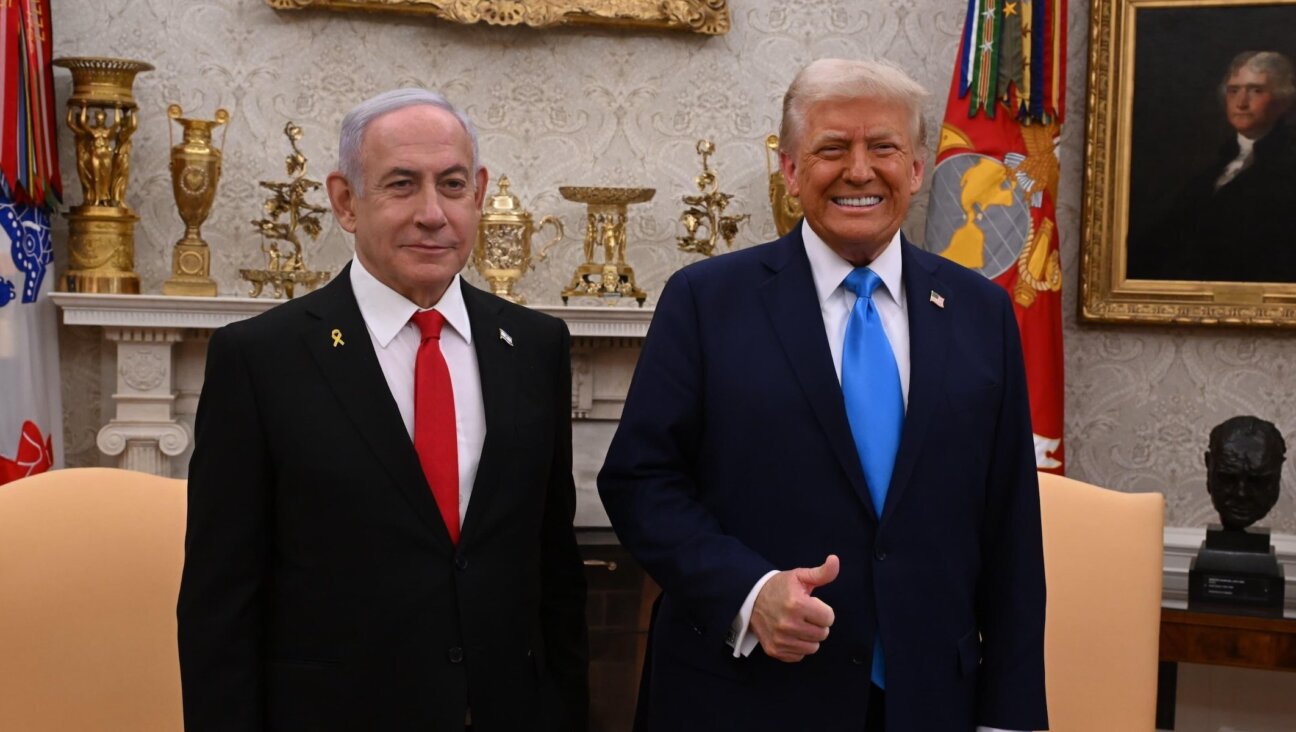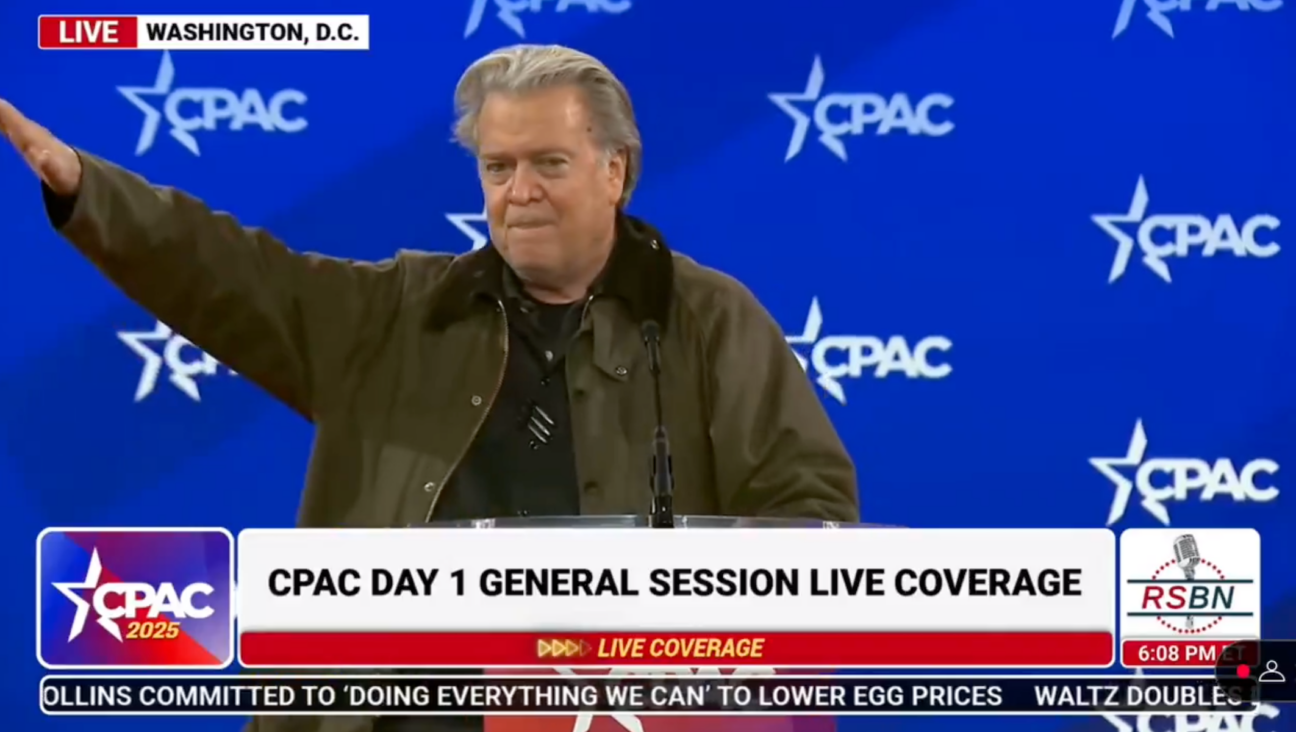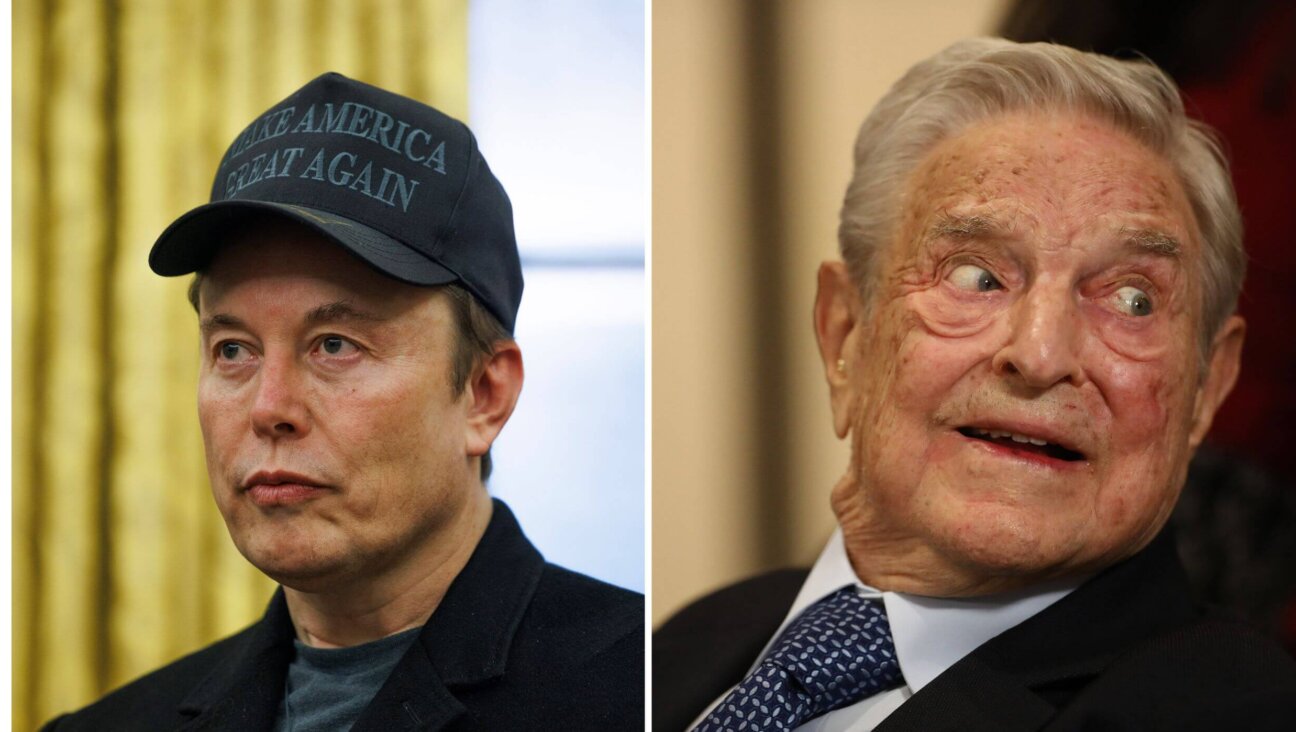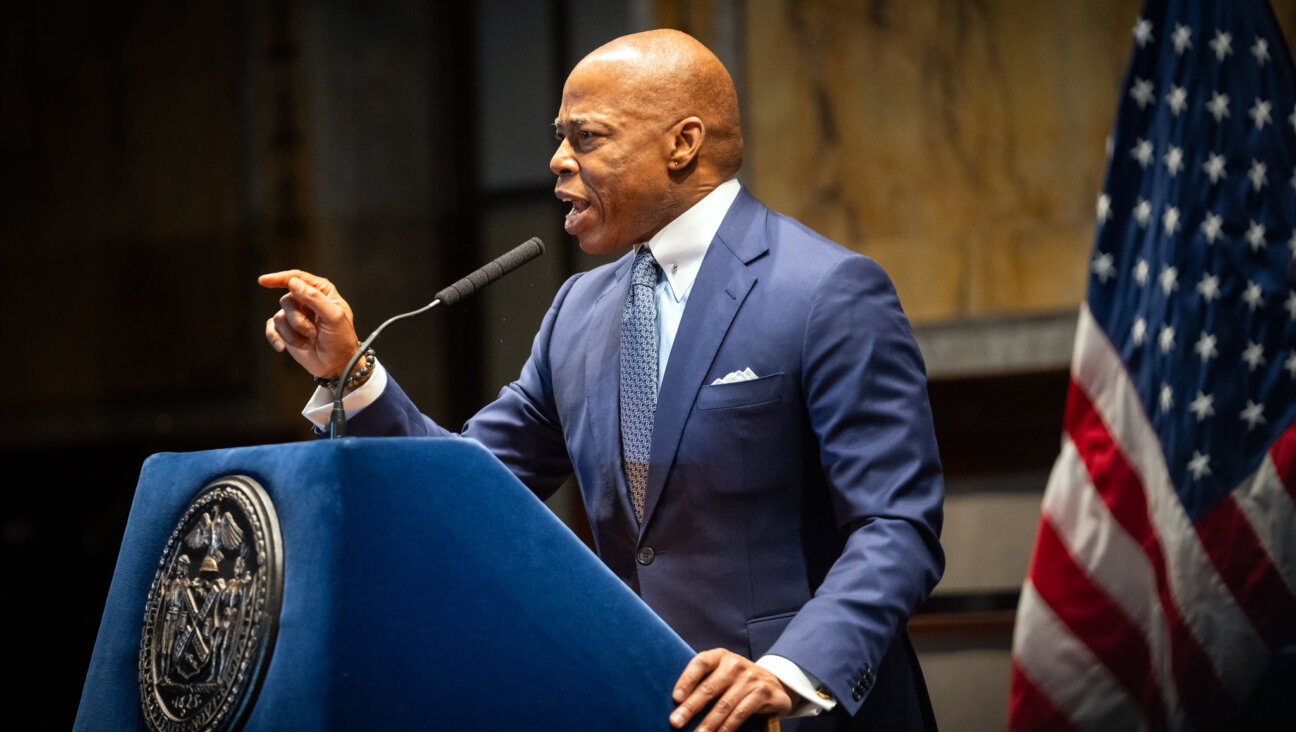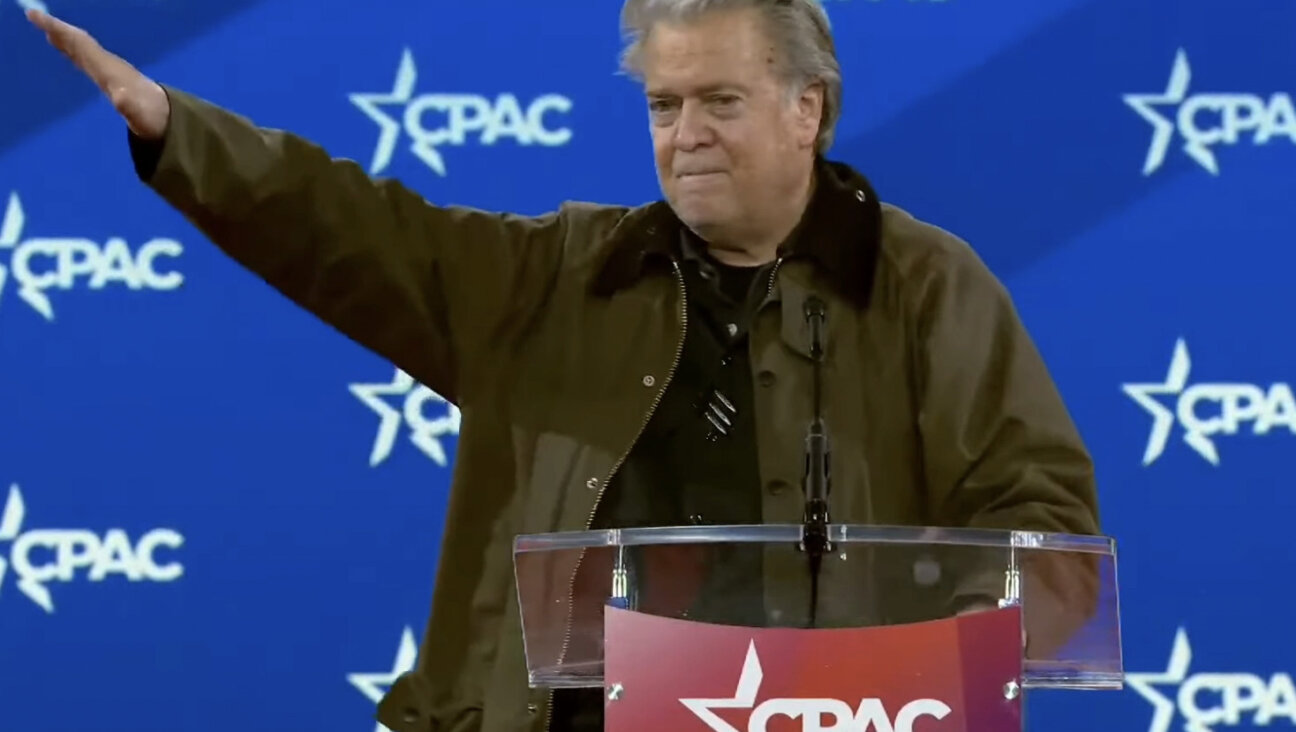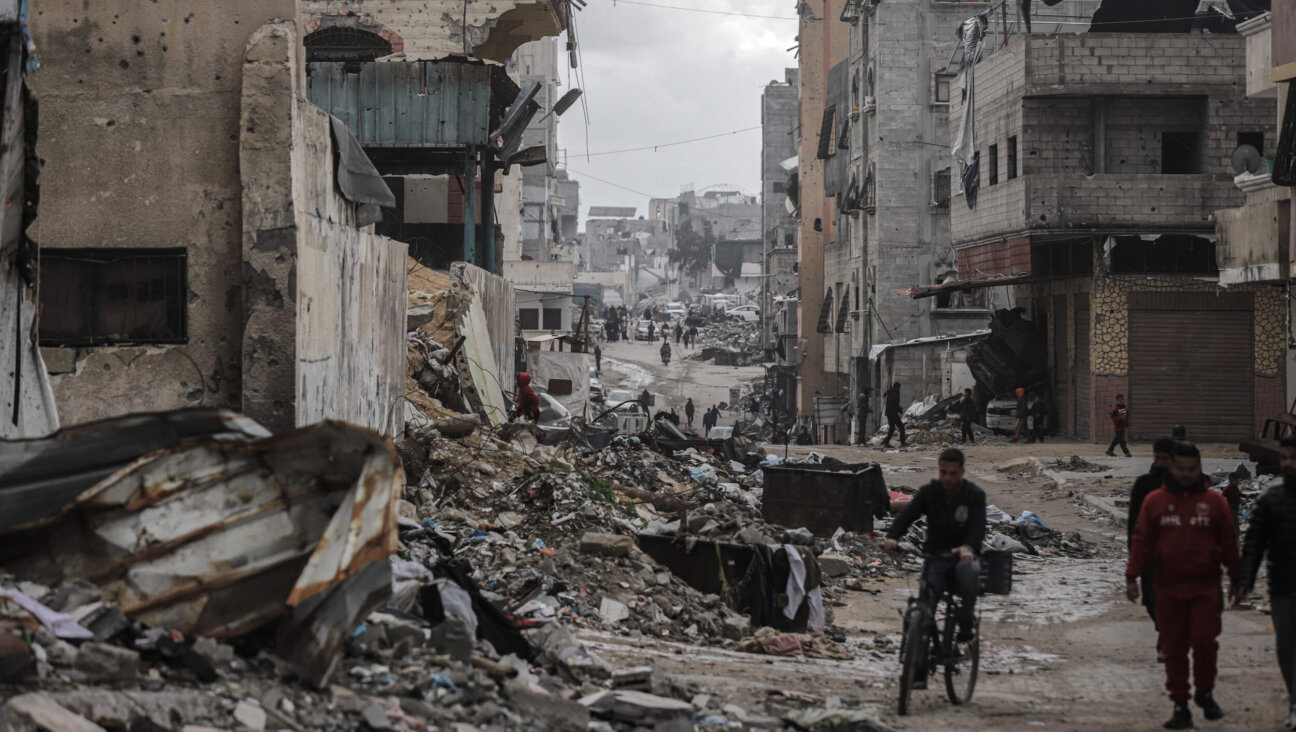US and allies propose ceasefire as fighting escalates between Israel and Hezbollah
Benjamin Netanyahu in a statement Thursday denied reports that he had agreed to the proposal, released before dawn in Israel
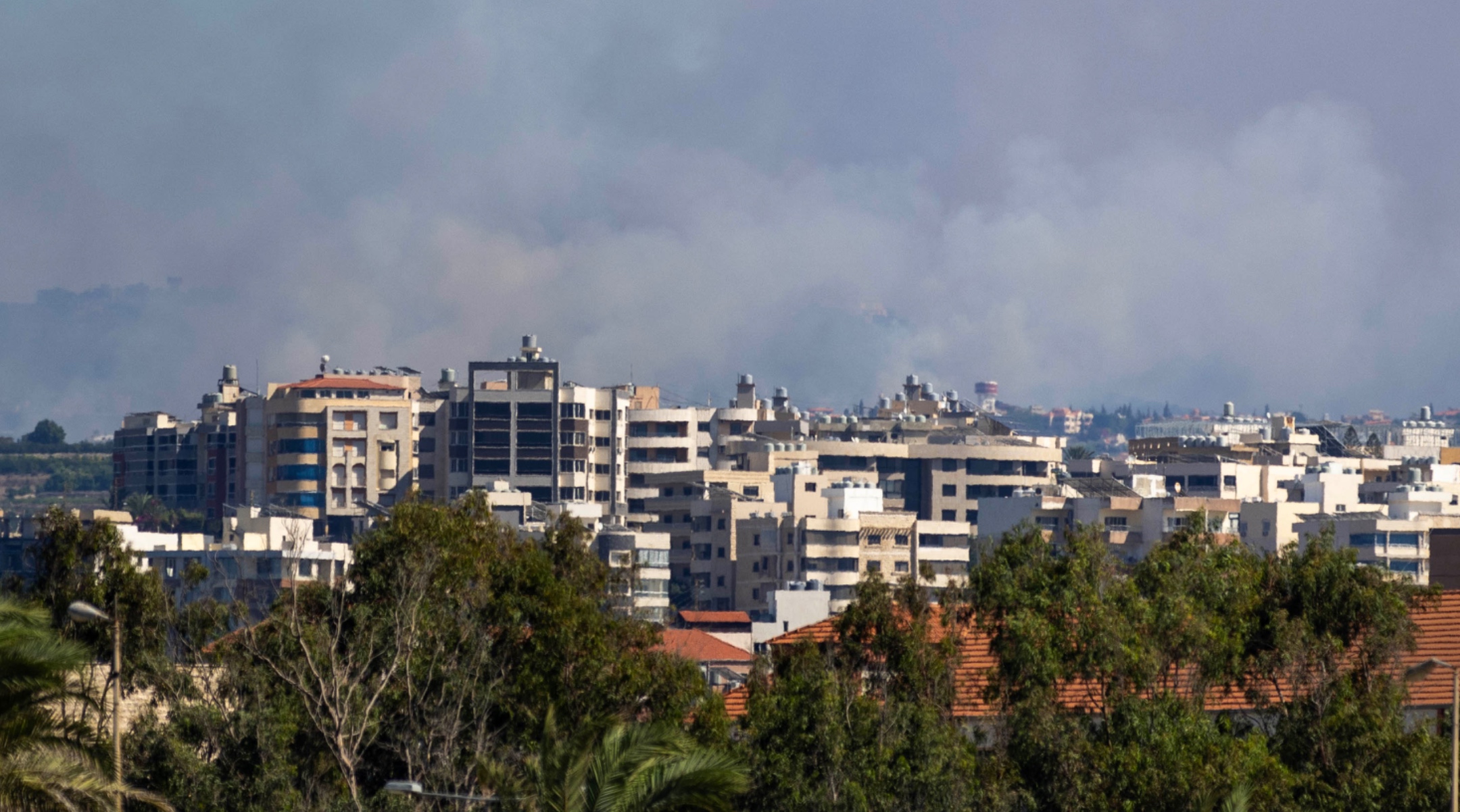
Smoke rises from an Israeli strike that hit Tyre, Lebanon, Sept. 26, 2024. (Daniel Carde/Getty Images)
(JTA) — Tensions between Israel and Hezbollah showed no signs of abating in the hours after a group of countries led by the United States and France proposed a ceasefire.
Israeli Prime Minister Benjamin Netanyahu in a statement Thursday denied reports that he had agreed to the proposal, released before dawn in Israel. In fact, he said, the army was continuing its fight on Israel’s northern border and Lebanon with “full force.”
“The report about a ceasefire is incorrect,” Netanyahu said. “This is an American-French proposal that the Prime Minister has not even responded to. The report about the purported directive to ease up on the fighting in the north is the opposite of the truth. The Prime Minister has directed the IDF to continue fighting with full force, according to the plan that was presented to him.”
The Israeli army said in its own statement that it was executing “precise strikes” in Beirut, the Lebanese capital and well north of the arena where much of the conflict has played out until now. Military leaders said they were also preparing plans for a ground invasion of Lebanon, which would mark a major escalation of the conflict.
The clashes in the north began last Oct. 8, when Hezbollah launched missiles into Israel in solidarity with Hamas’ attack on Israel. Israel has responded with airstrikes on Hezbollah targets. Since then, tens of thousands of civilians have been displaced on both sides of the border. In Israel, dozens of civilians and soldiers have been killed. Israeli strikes have killed hundreds of Hezbollah fighters and, in intensified strikes in recent days, hundreds more civilians and Hezbollah operatives. In the past few days, hundreds of thousands of Lebanese civilians have fled north.
Overnight, the army said earlier, the IDF had hit 75 targets in Lebanon and Hezbollah had launched 45 missiles into Israel. Hezbollah said its missiles had reached just north of Haifa, the major port city in Israel’s north. On Wednesday, Israel said it intercepted a ballistic missile it said Hezbollah had aimed at Tel Aviv, a first in the conflict.
The call for an immediate 21-day ceasefire spearheaded by the United States and France, which was formerly a colonial power in Lebanon, was joined by Australia, Canada, the European Union, Germany, Italy, Japan, Saudi Arabia, the United Arab Emirates and Qatar. The inclusion of the three Arab nations, which maintain varying degrees of interest in Lebanon, was a sign of Hezbollah’s increasing isolation.
“The situation between Lebanon and Israel since October 8th, 2023 is intolerable and presents an unacceptable risk of a broader regional escalation,” said the statement. “This is in nobody’s interest, neither of the people of Israel nor of the people of Lebanon.”
The statement notably called for abiding by U.N. Security Council Resolution 1701, the resolution arrived at after the last major Israel-Hezbollah war in 2006, which required the terrorist group to pull its forces north of the Litani River, and which Hezbollah has never observed. The statement also called for conditions that would allow civilians to return to their homes on both sides of the border.
The exchange of fire on Israel’s northern border has intensified since July, when a Hezbollah missile killed 12 schoolchildren in a town in Israel. Israel retaliated by assassinating top Hezbollah officials. Last week, mass explosions of electronic devices held by Hezbollah operatives in Beirut and elsewhere killed dozens of people and wounded thousands. Most of the targets appeared to be Hezbollah operatives, although a number of civilians were among the casualties. Israel is widely believed to be responsible for the strike.
President Joe Biden in his address to the United Nations General Assembly on Tuesday called for an end to the Israel-Hezbollah hostilities. Two senior Biden administration officials briefing reporters about the statement late Wednesday night seemed optimistic that the sides may adopt it. They said Israel and Hezbollah had been consulted throughout the formulation of the statement calling for a ceasefire.
“I can share we have had these conversations with the parties, and felt that this was the right moment based on our discussions, they are familiar with the text,” said one of the officials. “We’ll let them speak to their actions of accepting the deal in the coming hours.”
The U.S.-spearheaded statement also called for a ceasefire in Gaza, which Netanyahu rejected.
“The fighting in Gaza will also continue until all the objectives of the war have been achieved,” he said, referring to the elimination of Hamas as a viable force and the return of the estimated 100 hostages still held by Hamas.
A message from our Publisher & CEO Rachel Fishman Feddersen

I hope you appreciated this article. Before you go, I’d like to ask you to please support the Forward’s award-winning, nonprofit journalism so that we can be prepared for whatever news 2025 brings.
At a time when other newsrooms are closing or cutting back, the Forward has removed its paywall and invested additional resources to report on the ground from Israel and around the U.S. on the impact of the war, rising antisemitism and polarized discourse.
Readers like you make it all possible. Support our work by becoming a Forward Member and connect with our journalism and your community.
— Rachel Fishman Feddersen, Publisher and CEO









